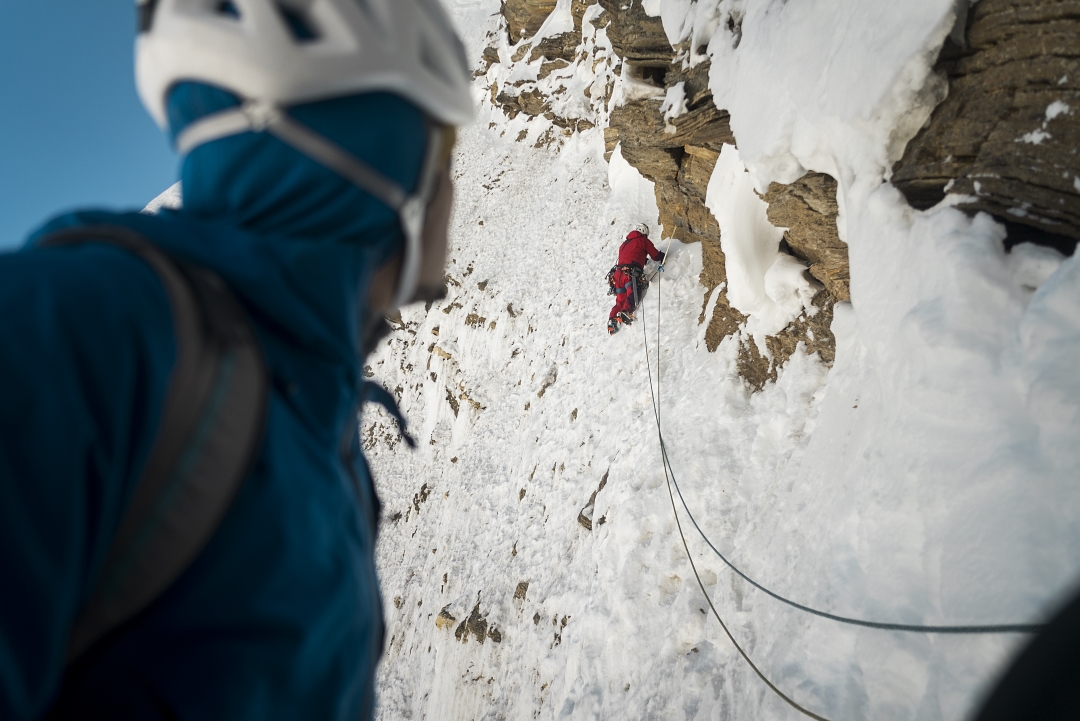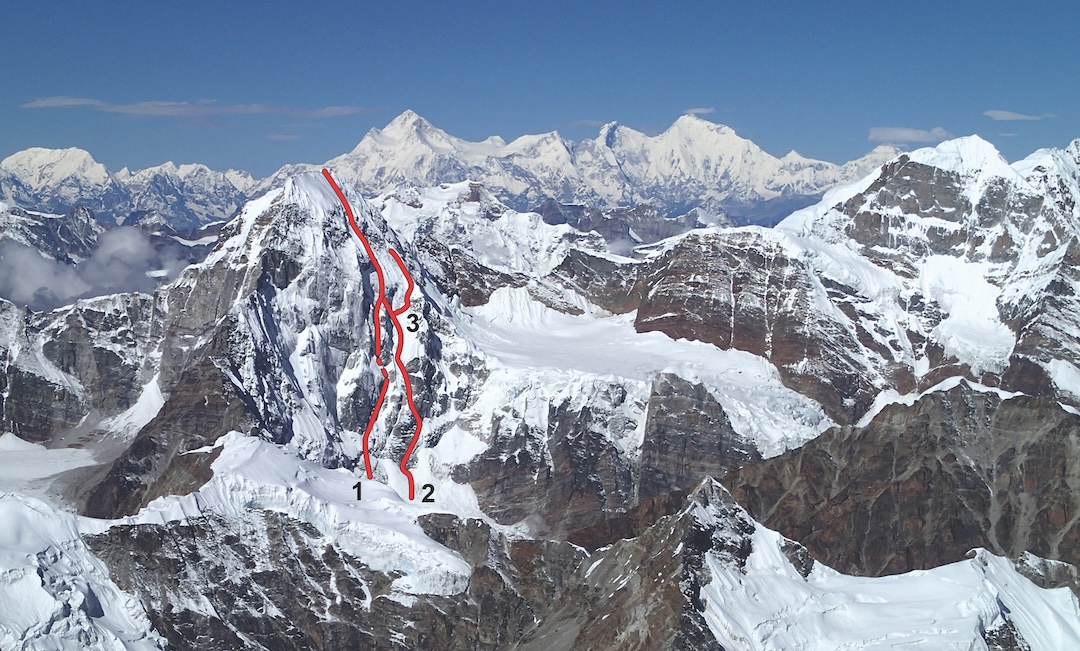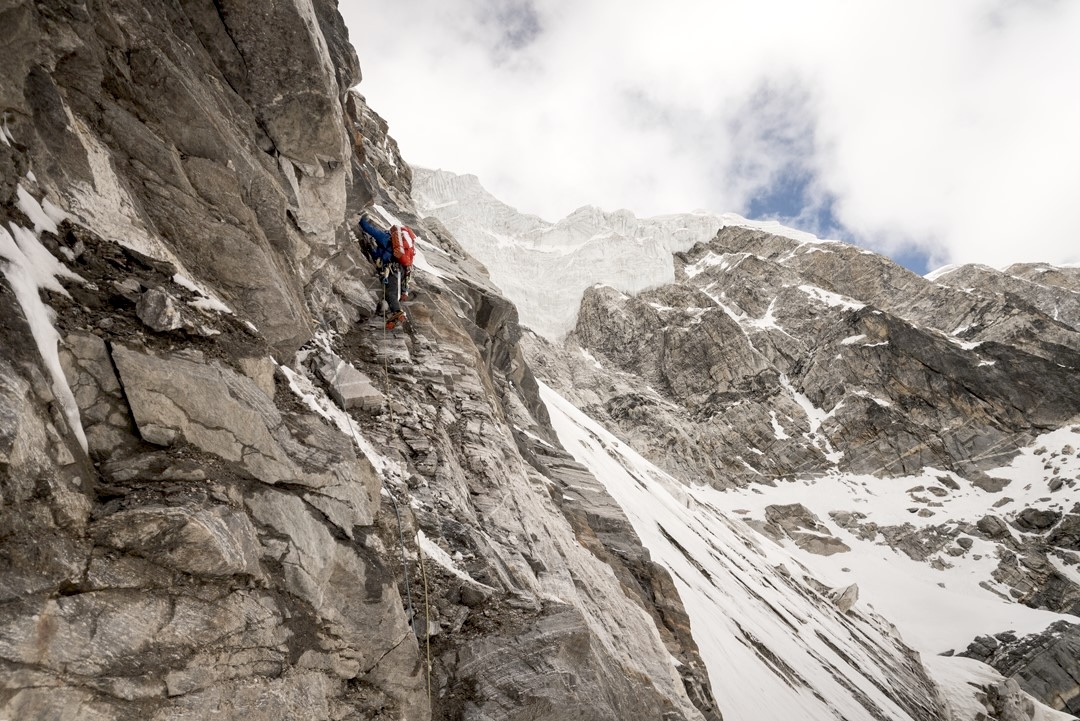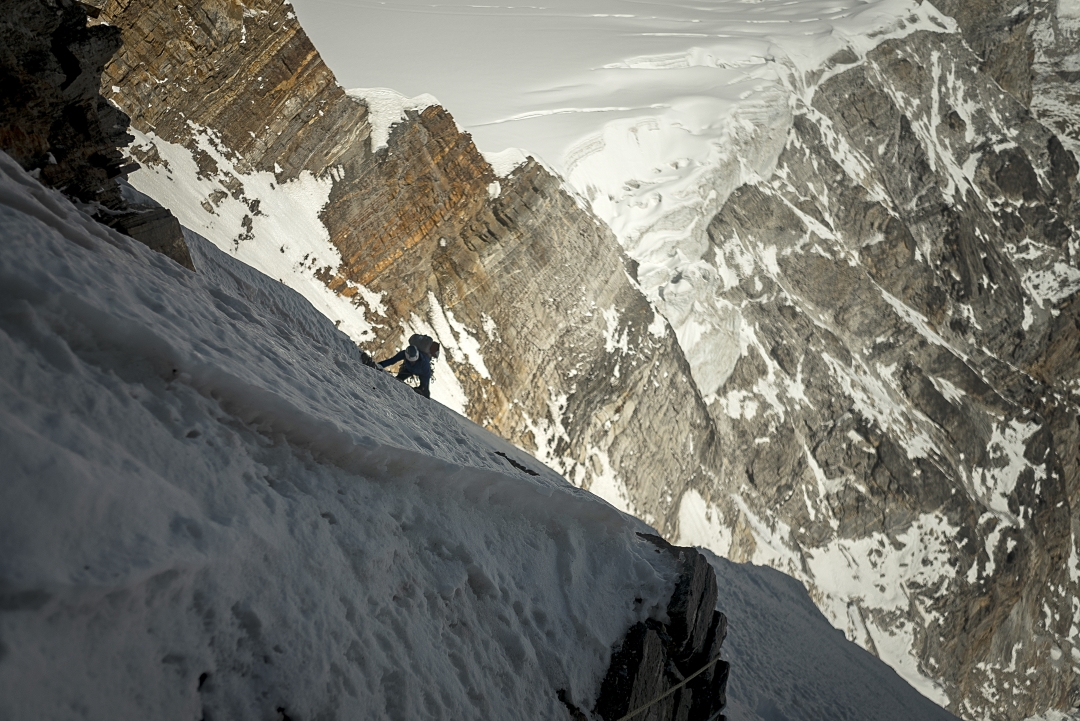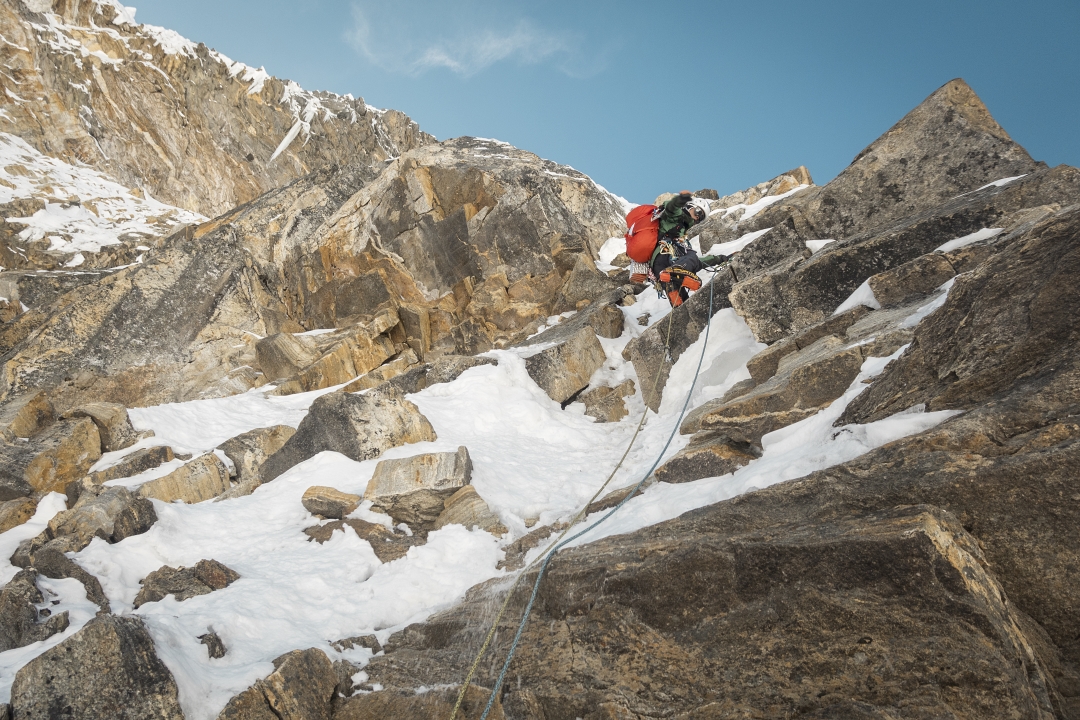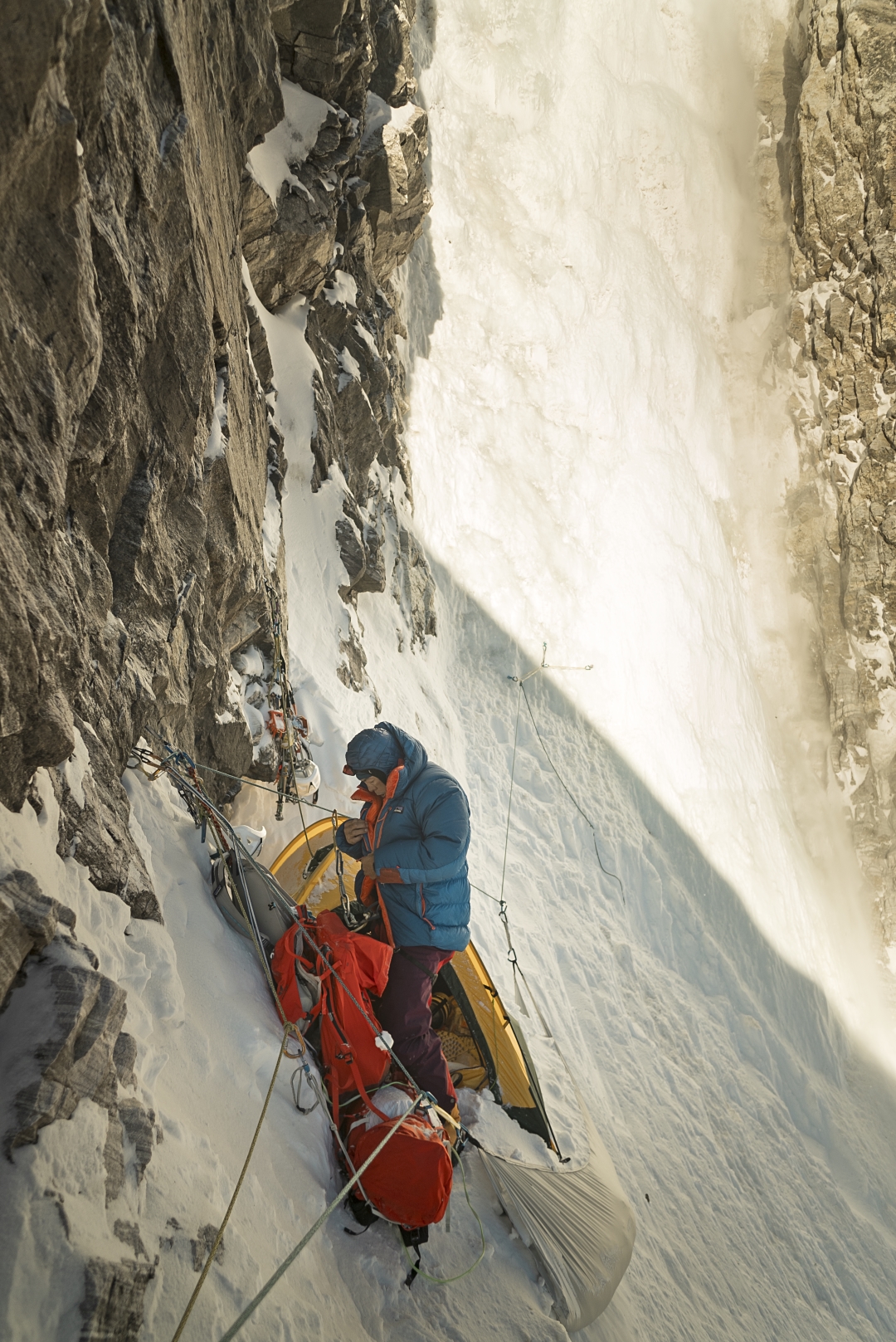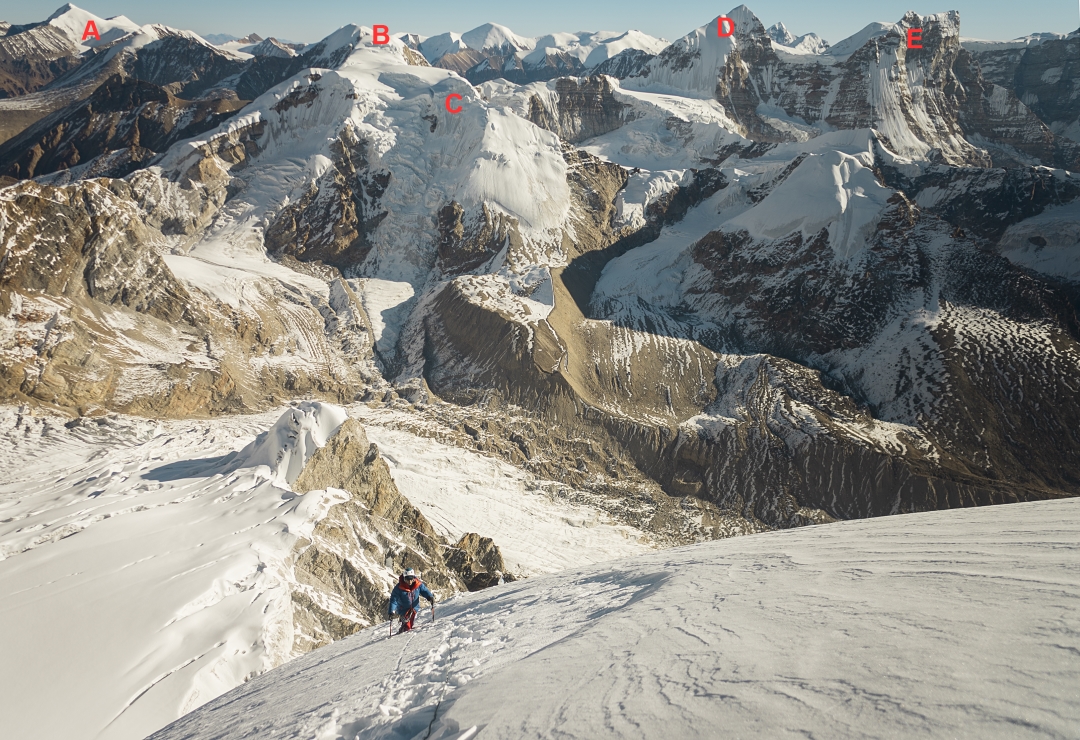Pandra, Northeast Face, A Piece of the Sun
Nepal, Janak Himal
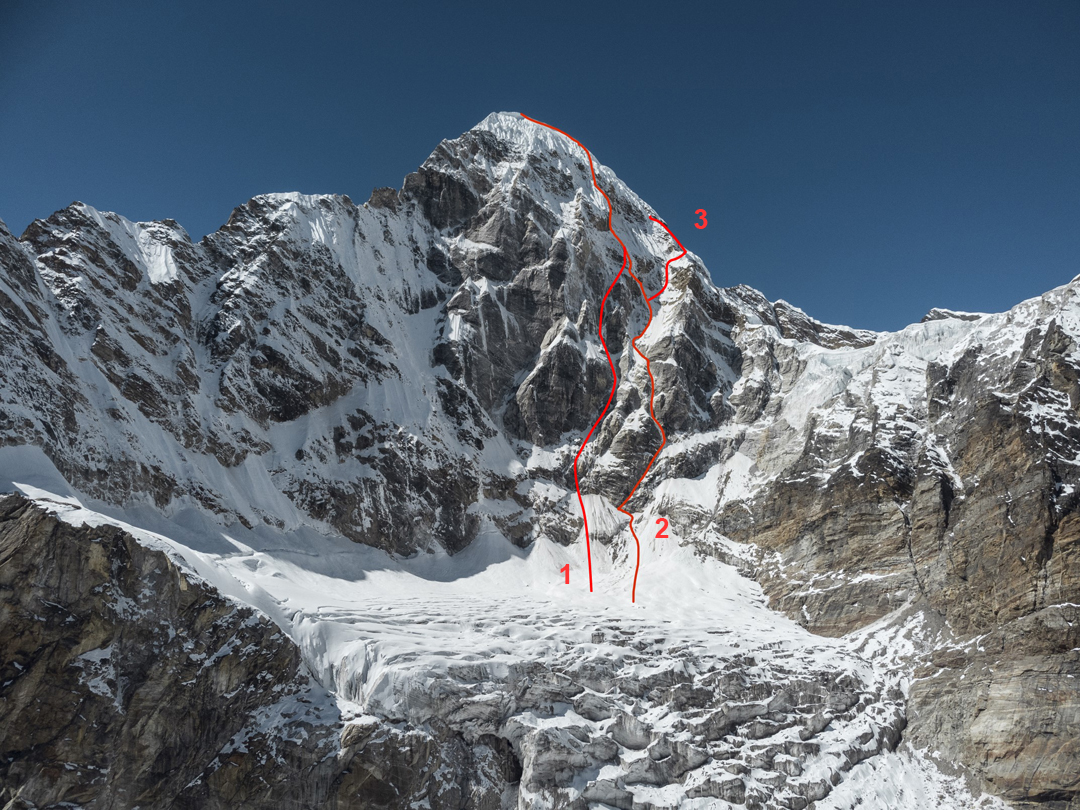
“Mr. Hagiwara, what mountain is this?”
The question was asked by Kei Taniguchi as she looked at a picture taken by Hiroshi Hagiwara, editor of Rock and Snow, in 2013. The photo clearly showed the unclimbed northeast face of Pandra (27°51’56.34”N, 87°59’24.96”E), measured at 6,673m in 2002 by the first ascensionists (the HMG-Finn map has an erroneous height of 6,850m).
In 2016, Taniguchi attempted Pandra with Junji Wada, retreating from two-thirds height (AAJ 2017). On return to Japan she wrote, “I’ve opened Pandora’s Box. I will definitely go back to check what’s inside.” Tragically, a month later, she fell to her death from Mt. Kurodake.
I interviewed many people to compile a book about Kei’s life, called A Piece of the Sun. In the final chapter, I hoped to incorporate a scene in which some of us, including Wada, climbed Pandra. However, Wada was seriously injured just before our team was due to leave Japan, and the expedition was postponed. Finally, in 2024, eight years after Kei’s accident, Suguru Takayanagi, Hiroki Suzuki, and I went to Pandra to complete her route. Wada had become a family man, starting a new life.
Just 20 minutes into the start of our trek from Sekatum, a landslide occurred. We ran for our lives, but our kitchen helper was hit and died instantly. “Isn’t Himalayan climbing just the ego of developed countries?” I wondered aloud to Suzuki, then worried for the next three days about whether we should go ahead with the expedition. However, our sirdar implored us to continue. We arrived at our 5,100m base camp on October 12.
The approach to advanced base at 5,300m on the west side of the Chabuk Glacier had changed significantly in eight years due to global warming: Much of the ice had gone, unstable moraine made walking difficult, and the northeast face of Pandra looked far drier than in the pictures taken by the French in 2017. [In October 2017, French climbers Mathieu Détrie, Pierre Labbre, and Benjamin Védrines completed the first route up the northeast face: Peine Plancher (1,200m, WI6 M6; see AAJ 2018).]
After acclimatization, we left advanced base for Pandra at 7 a.m. on October 25. It took three hours to reach the foot of the wall, after which we climbed to a bivouac site at 5,500m, where we pitched the tent using a snow hammock. The climbing to this point, following the line taken by Taniguchi and Wada, had involved crumbling rock and brittle ice.
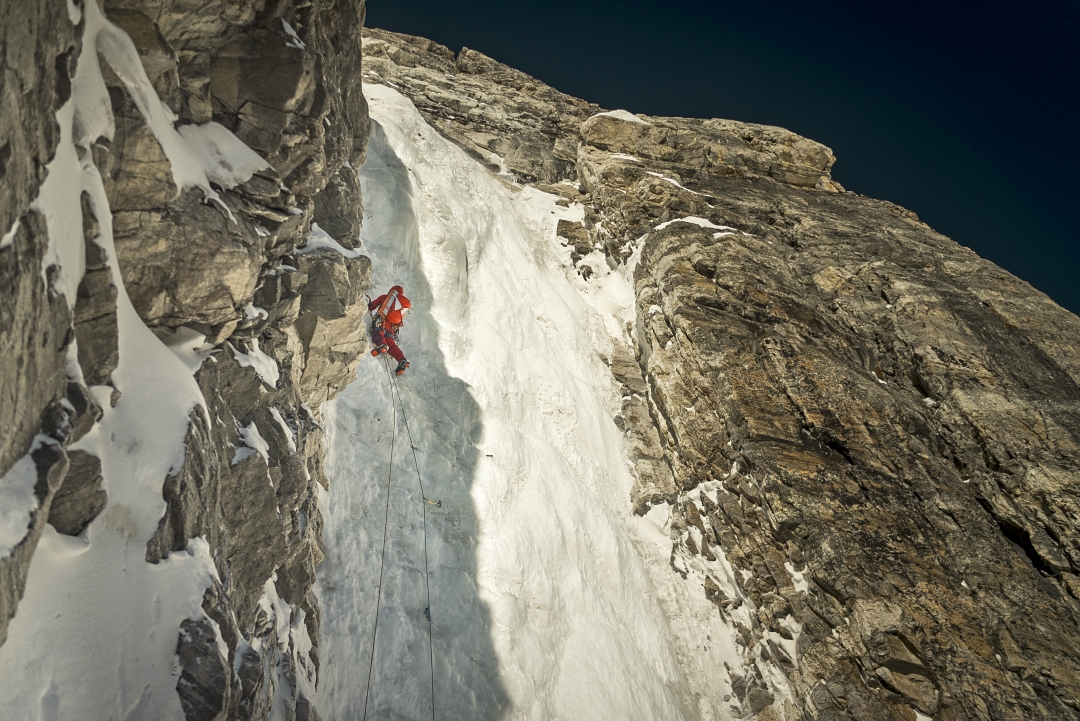
On day two, we climbed three pitches of excellent, steep alpine ice, dubbed the Pandra Great Icicle. Above, a couloir with poor protection and belays cut through the center of the face, and at 5,800m we made our second bivouac.
On the 27th, we headed directly toward the summit. [From around this point, or below, Taniguchi and Wada traversed to the north spur; the 2024 team continued direct and joined the line of the 2017 French route, which came in from the left.] At around 6,000m, the French party had found a pitch of M6. Takayanagi, who is about ten years younger than us, onsighted that pitch easily—he should achieve great things in the Himalaya. Suzuki took the lead and brought us to a bivouac beneath a rock outcrop at 6,200m. We were able to pitch the tent properly—but only just.
The next morning, we left our bivouac gear and headed for the top. Takayanagi climbed an overhang that was much more difficult than the M6 the day before. We then climbed ice and difficult sugar snow, with little meaningful protection, to reach a snow cave after dark at around 6,500m. We shivered through the night in just the clothes we were wearing.
With Suzuki in the lead, it took only 30 minutes to reach the top. Suzuki shouted, “Whoa, we did it!” I’ve been climbing with him for 20 years, but this was the first time I’d heard a serious roar. The weather was perfect. Our GPS recorded 6,665m.
By 4 p.m. we had returned to our snow cave, and the following day we rappelled to the base. We named our route A Piece of the Sun. It will continue to burn in our hearts and guide us toward greater mountains.
—Akihiro Oishi, Japan, with help from Kaoru Wada, Hiroshi Hagiwara, and Rodolphe Popier
Editor's Note: Pandra was first climbed in 2002, from the south, by a Danish expedition. See AAJ 2003.


